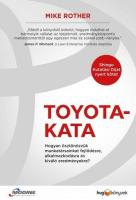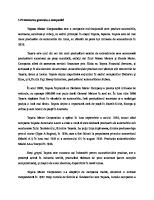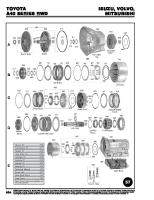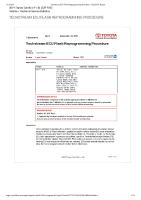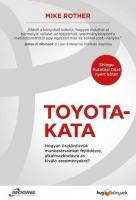Toyota Porter's Diamond Toyota Five Forces Model Toyota Product Positioning [PDF]
Assignment No 1 Company Name: Toyota Motors The Porter’s Diamond Model The Porter’s analyses discuss the impact of natio
42 0 274KB
Papiere empfehlen
![Toyota Porter's Diamond Toyota Five Forces Model Toyota Product Positioning [PDF]](https://vdoc.tips/img/200x200/toyota-porterx27s-diamond-toyota-five-forces-model-toyota-product-positioning.jpg)
- Author / Uploaded
- Sufi Maher
Datei wird geladen, bitte warten...
Zitiervorschau
Assignment No 1 Company Name: Toyota Motors The Porter’s Diamond Model The Porter’s analyses discuss the impact of national conditions on firm’s international competitive advantage and are based on three principles: 1. The competitive performance of a country and the performance of the firms are interrelated as a country’s “success” depends on the firm’s performance and the performance of the firms depends on the on the nation’s environment; 2. For a country to sustain its competitive advantage its firms must maintain its competitive advantage through constant innovations and development of resources and capabilities. 3. Dynamic conditions of national environment are of the major impact on firm’s ability to innovate and develop.
1
The four determinants of competitive advantage include: Factor conditions : The economy's position in factors of production such as skilled labour, physical resources, capital or infrastructure necessary to compete in a given industry. Demand conditions : The nature of the local demand for the industry's product or service. Firm Strategy, structure and rivalry conditions : The conditions in the economy governing how companies are created, organized, and managed and the nature of domestic rivalry. Related and supporting Industries: The presence or absence in the economy of supplier industries and related industries that is highly competitive. Two factors influence the development of these determinants: Chance : Acknowledging the extent to which an industry’s competitiveness is related to its historical path of development; Government: The ability of government is to manage the determinants of advantage to the benefit of their basic industries.
2
Porter’s 5-forces analysis
1. Competitive Rivalry between Existing Players: The competition among firms in the industry normally determines the industry overall competition. Moreover, in some industries firms compete so aggressively that they price products below costs level. In other industries firms compete in non price dimensions such as marketing and innovation. The intensity of rivalry depends on sic factors: the concentration in the industry, rate of market growth, cost conditions, product differentiation, switching costs, and exit barriers. Competition players are likely be high when: There are many players of about the same size Players have similar strategies There is not much differentiation between players and their products many rivals competing for market share most of them were experienced each competitor was trying their best to differentiate their car in terms of performance and value
3
2. Bargaining power of supplier: The relationship between producers and suppliers is similar to the relationship between producers and buyers. The main issues are the ability of firms in the industry to switch between different input suppliers and the relative power of each party. Moreover we can say: Low bargaining power The market dominated by large number of suppliers Suppliers were not in good condition during that time The switching costs from one supplier to another was low
3. Bargaining Power of Buyers: The bargaining power of buyers is dependent on several circumstances that include the amount of the product’s suppliers, buyers’ concentration, product’s level of differentiation, buyers’ price sensitiveness. There are some explanations which can define further: The bargaining power of the buyers is moderately high in mini-car segment Customers have low margins and are price sensitive The buyers are a significant portion of the industries revenue and all manufacturers are dependent on them
4. Threats of New Entrants: The threat of new entrants is low because huge capital and cutting-edge technology is required. Moreover, the threat of entry rather than actual entry may make established firms to lower their prices to the competitive level. The major sources of entry barriers are economies of scale, capital requirements, cost advantages (high fixed costs), product differentiation, access to distribution channels, governmental and legal barriers.
5. Threat of substitute products: The presence of substitute products can reduce profitability in an industry due to the limited prices. The costs of switching to substitutes, the buyer’s willingness to substitute, and the relative prices and performance of substitutes influence the threat level. Moreover we can say: Pressure from some of the substitutes available There are plenty available and can offer more power and space Threat from two-wheelers Switching costs for customers are very low in mini-car segment
4
Assignment No 2 TOYOTA Product Positioning Product Differentiation: The main goal of product positioning is to keep your product different from other brands. If your product is differ and unique then you are on top of your customers mind when they are considering a purchase. Product differentiation refers to how Toyota makes their product differ from other brands like designing, pricing and marketing.
Gaps in the Market: The perceptual map of product positioning can be used to identify the gaps in the market. It means that how Toyota makes their product potential for buyers. Toyota chooses to fill the gap of high quality in average price. So we can say that Toyota uses the quality gap to tackle the market.
Cost Leadership: Toyota has achieved low-cost leadership status because it has developed considerable skills in efficient supply chain management and low-cost assembly capabilities and because its models are so well-positioned in the low-to-medium end of the price spectrum. These are enhanced by Toyota’s strong emphasis on quality.
Bargain Brands: Brand is created by the support of people’s expectations and appreciation. Toyota is facing problems because local suppliers from china are providing cars at very low price, it attracts the customer because they want low price rate.
5
Brands:
Porsche Ferrari BMW Audi Mercedes Ford Hyundai Honda Toyota Suzuki Chevrolet Daihatsu Other China Brands
POSITIONING MAP
Porsche Ford
BMW Ferrari
Mercedes
Hyundai
Audi
Toyota Honda
Suzuki Chevrolet Other China Brands
Daihatsu
6
